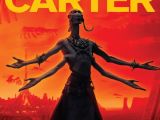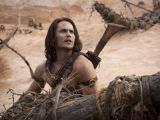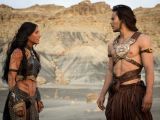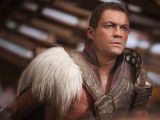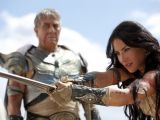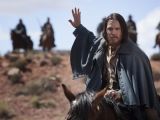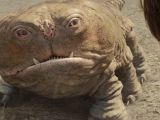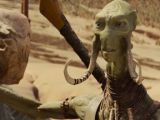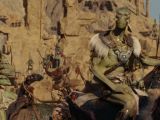Oscar-winning director Andrew Stanton (“Wall-E,” “Finding Nemo”) is making his live action debut with “John Carter” for Disney. The story, set on the arid planet of Mars (Barsoom, as it's known to Martians), might limp and stumble here and there, but overall, the film is quite an amazing, very entertaining story.
What any moviegoer should know, first of all, about “John Carter” is that it's based on the 1912 story by Edgar Rice Burroughs, the founding father of the fantasy / sci-fi genre we know today.
1912. The story is 100 years old, no more and no less.
This mention is essential, since many reviewers, be they film critics or fans, accuse “Carter” of shamelessly ripping off blockbusters like “Star Wars,” “Avatar” or “Prince of Persia.” Nothing could be farther from the truth.
All the great minds that have created these stories and these films have already gone on record saying they had been inspired by Burroughs' early work when conceiving their own. Just a fact.
Taylor Kitsch is John Carter, a war veteran with plenty of experience and some personal issues, who has decided to abandon his previous life and go out to seek gold and make a fortune.
On one of his brush-offs with the law, while being chased by the Apache, he stumbles across something better than his dream cave of gold: an amulet that transports him to Mars. Or Barsoom, as it's called by its feuding inhabitants.
Once here, he discovers that he can take giant leaps thanks to a combination of altered gravity and bone density. He also finds out that the land (he doesn't know he's on Mars yet) is populated by the strangest creatures ever.
They're green and incredibly tall, have four arms and elephant-like tusks, speak a very strange language and are warriors.
The Tharks embrace Carter for his ability to leap through space, which they believe they can use to the best of their advantage, in the ongoing battle with other tribes of similar creatures.
They're not the only ones at war either: the people of Helium and Zodanga have also been fighting for years, with the latter being actually a “traveling city” (beautifully done) that destroys everything in its path. Helium is the only remaining city on Mars, the final bastion of life and goodness.
Carter meets the princess of Helium, Dejah Thoris (Lynn Collins), who has run away from home because her father, the king, wants her to marry Sab Than (Dominic West) of Zodanga, a good old-fashioned villain.
Another important player, who adds an extra layer of evilness and danger to the story, is Matai Shang (Mark Strong), a God-like entity who has decided it's time for Mars to reach the end of life.
While the story might seem predictable and overdone – which it is, to some extent – it's the way it plays out that truly deserves praise.
Around every corner, underneath every stone on Mars, are secrets, wondrous things that boggle the mind to this day.
While Tharks are essential land creatures who yield massive weapons and even master some heavy firepower, the humans (the residents of the two cities) can even fly, sailing the sky using the sun as fuel, in huge insect-like ships.
One particular scene shot inside Helium is nothing short of mind-blowing, showcasing the kind of creative power Burroughs had at his disposal.
In fact, almost everything in this brave new world commands admiration, from the “dog” Woola to the giant white apes used for gladiator-style killings, and the rhino-resembling horses used in battle.
Granted, some viewers will probably note that the story leaves something to be desired, in that the justification for a few main events and actions is lacking.
The same goes for the pace of the film. Critics have pointed out that, whenever the shooting, the running, the fighting and the explosions stop, characters simply don't know what to do with themselves.
In these scenes, the dialog is lackluster at best and incredibly clichéd, prompting the question of whether the film could have not benefited from better actors and performances.
Even so, when the credits come on screen, these minuses are forgotten. The twist at the end, which also paves the way for a sequel, definitely contributes to that.
“John Carter” runs for 132 minutes, and is rated PG-13 for intense sequences of violence and action. It opened in most territories on March 9, and will conclude its run in Japan on April 13.
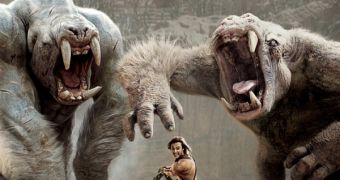
 14 DAY TRIAL //
14 DAY TRIAL // 

